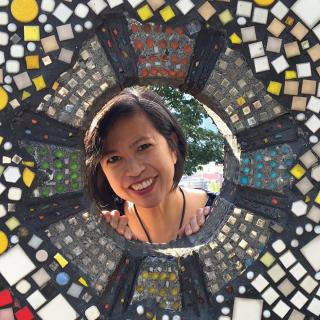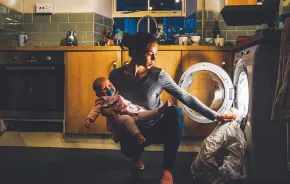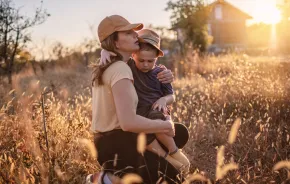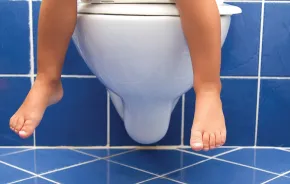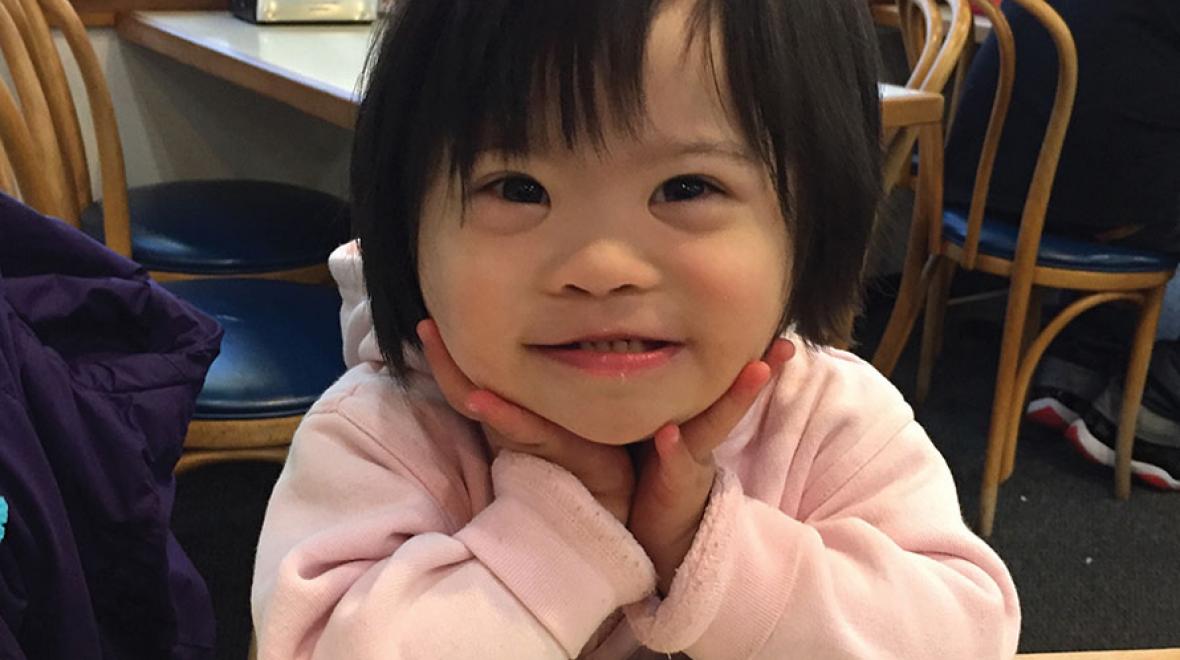
Photo:
The author's daughter. Photo credit: Emily P. Lawsin
“Do you want to keep the baby? If you want to terminate, you are running out of time to legally do that in this state,” said the doctor subbing for my obstetrician. Genetic tests, he’d just explained, showed a 98 percent positive screening that the baby in my belly would be born with Down syndrome. I was shocked at his question.
My world, it seemed, was falling apart: We were under a lot of stress at work and Spouse’s job was in jeopardy. Shaken by this latest news about the baby, I curled up in a ball, rocking back and forth, crying and worrying about how the world would treat a Filipina Japanese American girl with Down syndrome.
Spouse and I, like many Asian Americans, have experienced all sorts of racism and microagressions growing up in Seattle and Los Angeles, and working in Michigan. We teach ethnic studies, so we wanted to read everything there was about Asian Americans and Down syndrome.
We found very little, except for the annoying fact that in 1866, Dr. John Langdon Down called people with the condition “mongoloids,” claiming that their facial features resembled those of people from Mongolia, or Asians. The term stuck. It wasn’t until the 1960s that the World Health Organization accepted the name “Down syndrome” (after Dr. Down) as standard terminology after a group of doctors and a delegation from Mongolia objected to the terms of “mongol” and “mongoloids.”
What does 'normal' mean to you?
After the initial shock of our daughter’s diagnosis wore off, we learned a lot from our friends, especially the authors and disability rights activists Janice Fialka, Richard Feldman and Micah Fialka-Feldman. They introduced us to specialists and our area’s local Down syndrome organization. We quickly learned how each state has different procedures but is required to implement federal laws designed to help children with disabilities.
Despite these positive steps, I couldn’t sleep. I worried about work. I felt out of breath just walking to work. Eventually, my blood pressure was so high, I had to be induced.
When “KK,” as I’ll call her, was born, she had to stay in the hospital for nearly a week due to complications including jaundice and abnormal platelet counts. After she was released, a Down syndrome specialist heard a faint heart murmur. An echocardiogram showed a “ventricular septal defect,” or a hole in KK’s heart. There was a chance, the cardiologist said, that the hole would close, so we held off on surgery.
In addition to all of the doctors’ visits, we were regularly seeing an occupational therapist to teach KK how to suck and drink more. Still, she sweated and tired easily, and didn’t gain much weight (a sign that the hole wasn’t closing). At 6 months, a second cardiologist confirmed what we’d hoped to avoid: KK needed heart surgery, sooner rather than later.
The chief of cardiac surgery, who also happened to be Asian American, guided us through what to expect. In a predominantly white city, it’s rare to find a pediatric surgeon of color; I felt grateful to not have to deal with stereotypical questions like, “Do you need a translator?” He and his medical team, along with our family and friends, supported us through the four-hour surgery and two months of recovery.
These days, KK is a thriving 3-year-old. She eats. She drinks. She climbs the furniture and tries to run. With the scar on her chest hidden under clothing, you wouldn’t know that she had heart surgery unless someone told you. Still, that doesn’t keep strangers from sharing their opinions.
There’s plenty of “Oh, can I touch her hair?” or “Can I take a picture of her because she looks just like a China doll?!”
“Uh, NO!” we tell these random people, quickly walking away, not wanting to engage in another lesson on microaggressions.
But the hardest comments? Those come from people we’ve just met, and sometimes loved ones, who say, “You know, when I look at her, she looks so NORMAL! You can’t even tell that she had heart surgery. You can’t even tell that she has Down syndrome!”
Sometimes when I’m exhausted, I just nod and smile, convincing myself that they don’t mean it maliciously. Other times, I seize the teachable moment and say, “REALLY? What does ‘normal’ mean to you?”
Read the full collection
|




